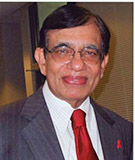
Prevention with Lifestyle Intervention – PART I

You have heard the old aphorism “In the end, it’s not the years in your life that count. It’s the life in your years.” What if I tell you that you can achieve both – live a long life and enjoy every one of those years? “How do I do that?” would be your first question. Well, that’s where a discussion of your ‘lifestyle’ comes in.
Here is how a recent encounter with one of my patients went in the clinic where I work. Mr. Jackson, just 42 years old, walks in with multiple complaints and he weighs in at 284 pounds with a height of 5’ 9”! Yes, that’s true; he is at least 100 pounds in excess weight and has been struggling with hypertension, diabetes and arthritis, not to talk about his morbid obesity, for many years without any semblance of improvement. Although I have repeatedly counseled him about adopting a healthy lifestyle in addition to treating him appropriately for nearly two years, they were of no avail.
His BP with three medications was still high and Hb A1c (a measure of diabetes, adequate control being <7.0) quite elevated at 12. He could barely walk one block because of his joint pains, shortness of breath and tired muscles. When I asked him, “How come, you have not improved even a little with all my advice and treatment,” he sheepishly answered, “Doc, I love my food, I can’t keep my hands off of it. I still drink a couple of beers every day and I smoke now and then.” So, I said seriously, “It’s time to end your love affair with food and booze and get moving.” You can see this guy’s life is spiraling down fast and his life span is going to be shorter because of his high risk for heart attacks, strokes and cancer unless drastic lifestyle interventions are undertaken.
As I have mentioned before, human body is built to last about 120-140 years, which means you can live to at least 100-plus if you plan on it. An often quoted example is that of Jean Calment, the French woman who had completed 122 years at the time of her death in 1997, and is generally considered one of the oldest persons to have ever lived. How did she do it? She lived a simple life without any excesses and seemingly made healthy choices in her everyday life.
Everybody laments that health care expenses are skyrocketing in the United States and the insurance companies are steadily increasing their premiums. Many employers and the government have become reluctant to cover mounting expenses. Some companies do not want to cover costly medicines and other treatments; so your out-of-pocket expenses go up. And doctors have a tough time in getting approvals to do even needy procedures. The U.S. health care is certainly the best in the world but it’s also one of the costliest, devoting a significant part of its economy – close to 18 percent of GDP – to health; this is 1 1/2 to 2 times as much as any other country. We don’t know if this is sustainable in the long run, so, it’s time to take action.
Now, the question you want to ask yourself is, “What do I have to do to stay healthy and avoid disease?” Prevention is not only cheaper but also life – saving in the long run. “Prevent the event” (preventing all major diseases before they get a foothold in your body) should be your mantra. And the medical experts say that nearly 50 percent of all diseases could be prevented or delayed through a structured lifestyle intervention that can be delivered cost effectively in real-world settings. This is particularly true for those who are at risk. And most of us, especially those of Indian origin are at risk for common diseases such as hypertension, diabetes and heart attacks.
Modern medicine revolves around practicing “evidence-based medicine.” So, you can rightfully ask, “If I follow all the recommendations for prevention and forgo my unhealthy behaviors and indulgences, can you give me a reasonable guarantee of long healthy life?” Well, I will tell you with confidence that “you can” since there are many impactful studies that support this conclusion. The most recent one is a landmark study conducted by Brigham and Women's Hospital in Boston that focused on different aspects of cardiovascular risk in two large groups: “83,882 women in the second Nurses' Health Study, and 20,900 men in the Physicians' Health Study I.” Both arrived at the same conclusion: “Do the right things and you get measurable benefits.” In other words, prevention is the best intervention.
To be continued …
M.P. Ravindra Nathan, M.D., is a cardiologist and Emeritus Editor of AAPI Journal. His book “Stories from My Heart” was recently released. (www.amazon.com or www.bn.com).